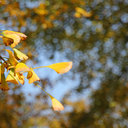Influence of drought intensity on the response of six woody karst species subjected to successive cycles of drought and rewatering.
Mots clés
Abstrait
Tolerance to the effects of drought and subsequent recovery after a rainfall appear to be critical for plants in the karst regions of southwestern China, which are characterized by frequent but temporary drought events. This study investigated the effects of drought intensity and repetition on photosynthesis and photoprotection mechanisms of karst plants during successive cycles of drought and subsequent recovery. Leaf water potential, gas exchange, chlorophyll fluorescence and several associated metabolic processes were studied in six plant species, including Pyracantha fortuneana (PF), Rosa cymosa (RC), Broussonetia papyrifera (BP), Cinnamomum bodinieri (CB), Platycarya longipes (PL) and Pteroceltis tatarinowii (PT) during three cycles of drought treatments at four different intensities. The four treatments were: well-watered, mild drought, moderate drought and severe drought, each followed by rewatering events. We found that limitations to CO(2) diffusion accounted for photosynthetic declines under mild and moderate drought treatments, while metabolic limitations dominated the response to severe drought. Repetition of drought did not intensify the impairment of photosynthetic metabolism regardless of drought intensity in the six species studied. Repetition of severe drought delayed the photosynthetic recoveries in PF, RC and CB after rewatering. Repetition of drought increased thermal dissipation in PF, CB and BP, as well as superoxide dismutase (EC 1.15.1.1) activity in RC and CB. Enhanced photosynthetic performance, measured as increased intrinsic water use efficiency, photosynthetic performance per unit of photosynthetic pigment, maintenance of high thermal dissipation and high ratios of carotenoids to chlorophylls, was observed during the rewatering periods. This enhanced photosynthetic performance allowed for the complete recovery of the six karst species from successive intermittent drought events.


